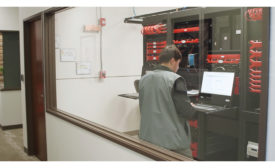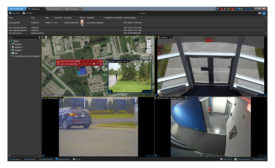Articles by Derek Rice
Thanks to technological advances, improved performance and artificial intelligence, this technology is on the cusp of significant growth.
Read More
Feeding the Growing Appetite for Video Surveillance Data
The increasing value of information is driving the demand for reliable, high-capacity, advanced video storage systems.
October 15, 2018
Church Security: A Layered-Technology Approach
Rising demand for protecting houses of worship highlights the need for strong intrusion and overall security systems
September 24, 2018
Practical Advice for Getting Surveillance Video From Point A to Point B
As cameras and other video devices demand greater power and greater transmission distances, integrators face numerous critical challenges in video system design and deployment.
September 19, 2018
The Case for HD Over Coax
Familiarity and ease of deployment make HDoC a compelling alternative for new installations.
July 16, 2018
Securing VMS Against Cyber Attacks
For security integrators, an ounce of prevention can go a long way
June 18, 2018
Knacks for Successful Video Recording
Programming and configuring an NVR is a critical process for providing end users with the most effective surveillance system
May 18, 2018
From Spare Bedroom to State-of-the-Art Monitoring Center
Allstate Security Industries and its employees tackle large-scale central station renovation
April 23, 2018
Cutting Through the Noise Of Wireless Video Transmission
Crowded frequencies can cause headaches for security integrators who don’t take the time to understand the basics of Ethernet radios
April 20, 2018
Top Trends in Unified Security Systems and How Integrators Can Benefit
Seamless integration between a growing number of systems and technologies creates greater opportunities to grow profitability.
March 26, 2018
Be in the forefront of security intelligence when you receive SDM.
Join over 10,000+ professionals when you subscribe today.
SIGN UP TODAY!Copyright ©2025. All Rights Reserved BNP Media.
Design, CMS, Hosting & Web Development :: ePublishing









